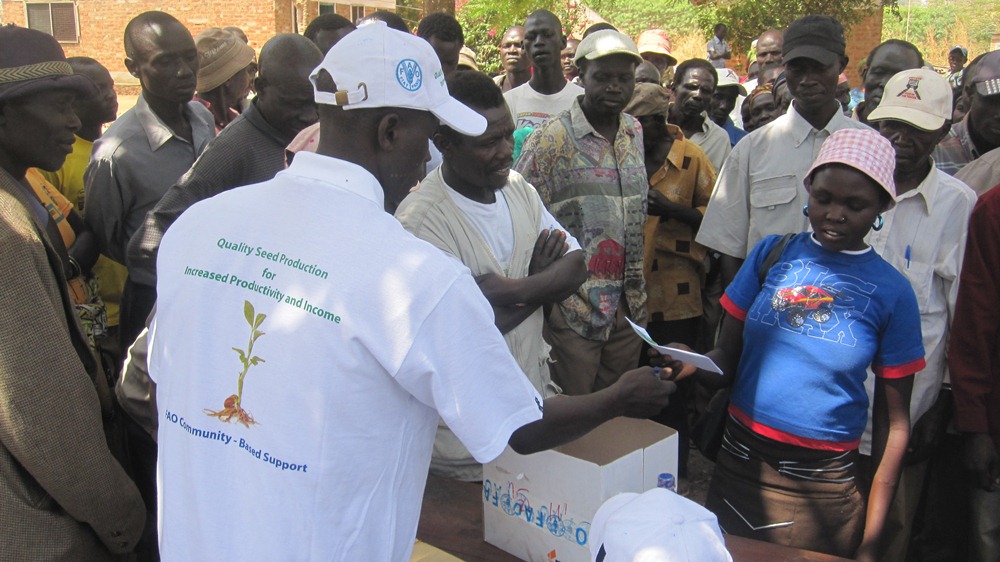50% of South Sudan households food insecure: UNOCHA
By Julius N. Uma
August 30, 2012 (JUBA) – At least 50% of households in South Sudan remain food insecure, while about 14% are severely affected, a United Nations Food Security Monitoring System (FSMS) conducted in the young nation, reveals.

The seventh round of FSMS, according to the UN Office for the Coordination of Humanitarian Affairs (UNOCHA), also shows this year’s food security situations slightly worsened in South Sudan’s Warrap, Upper Nile, Greater Bahr el Ghazal, Western and Central Equatoria states, when compared to last year.
However, Jonglei and Eastern Equatoria states recorded improvements in food security level this year, according to the findings of the assessment.
The assessment, conducted from June to July this year, also points to the significantly different values and trends were found among states, with the main limiting factor relating to food access.
“The expected seasonal food security deterioration for this time of the year is aggravated by the trade closure between South Sudan and Sudan, and the increased food demand in areas of high returnees,” UNOCHA notes in its weekly bulletin.
The report, which covered the period 20-26 August, cites high fuel prices, a weakening of the local currency against the dollar and the scarcity of certain staples in markets, as having immensely contributed to the already existing food access problems.
Most households, according to FSMS, averagely spend 63% of their budgets on food commodities, while reportedly compromising spending on other commodities.
“High food prices remain the shock most frequently reported by households,” partly read the OCHA bulletin, and predicts that the situation may not improve until the new harvest, end of rainy season or unless the border between South Sudan and Sudan are re-opened.
Nearly 4.7 million people in South Sudan, according to the UN, remain food insecure, with about one million at risk of facing severe hunger this year. The organization’s target, however, is to assist at least 2.4 million food insecure people in the young nation by year end.
Meanwhile, child malnutrition, the report says, reached the highest levels since June 2010, with 20% of children between the ages of 6-59 months, said to be acutely malnourished.
Early this week, the UN refugee agency (UNHCR) said health situations in South Sudan refugee camps were alarming. About 15 percent of children under five, according to the agency, are reportedly severely malnourished in Yusuf Batil camp, which hosts nearly 34,000 Sudanese from Blue Nile State.
To encounter the rampant health problems, UNHCR and its partners this month, reportedly launched an extensive health and hygiene outreach programme, which particularly emphasizes good basic hygiene.
(ST)
Read the full report here:
OCHA South Sudan Weekly Humanitarian Bulletin for the period 20-26 August 2012
